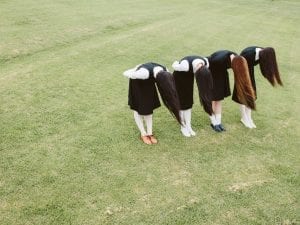Extraordinary showcases the innovative work of graduating students from Leeds College of Art. Opening this June, the college’s buildings are transformed into large scale exhibition spaces that showcase the breadth of ideas from new and emerging practitioners at the rise of the digital age.
A: How many graduates are being showcased this year, and how does this compare to last year?
LCofA: The work of 354 graduates will be showcased at Extra-ordinary, an increase on previous years. The College is going through an exciting period of growth, with the introduction of a Fashion Photography course in 2016, and five new undergraduate courses to come in 2018. A new £22 million state-of-the-art building and facilities expansion will allow us to increase capacity and diversify courses, providing new and exciting opportunities for future practitioners, as we become the only specialist arts university in the north.
A: What can visitors expect in terms of different types of media, and how do you think that this represents a new generation of practitioners in its entirety?
LCofA: New technology plays a part in this year’s work, with students developing 360° animations, and interactive applications exploring the relationship between music and art. However, what is particularly evident this year is a return to hand-crafting, using more traditional skills and media in response to wider themes. With the rising popularity of craft, in particular “craftivism” in response to political and social issues, we may see this reflected more widely in the next generation of practitioners.
A: Are there any thematic or conceptual connections across the works this year?
LCofA: The range of themes in the work is really varied, celebrating and reflecting the breadth and diversity of courses. Whilst this makes identifying specific overarching trends difficult, more broadly the works are linked conceptually through the position of their creators as emerging practitioners, beginning to find their place as artists, designers and creators outside of the College.
A: In such a politically unstable landscape, have any of the students connected their practices to social or political issues?
LCofA: One of the main themes in evidence this year is the impact of societal norms and expectations on young men and women, addressed through feminism and feminist art.
“Everyday sexism” is explored through a range of practice, including an award winning Creative Advertising project What are you laughing at?, which aims to denounce the seemingly small inequalities experienced by women on a day to day basis. Hand rendered posters and placards produced by Visual Communication students provide another response to the pressures on women in today’s society.
A series of ceramic vases explore women’s relationship to society’s expectations around body shape, whilst The Hungry Haven reflects women’s complicated relationships with food, using public performances to challenge and explore the detrimental impact society and the mass media can have on women’s day-to-day experiences. Being Boy displays the coming of age for young boys; showing their struggles and love within friendships and brotherships, challenging societies “norms” of masculinity.
A: What are the main highlights of the show?
LCofA: Extra-ordinary is an opportunity to see the latest creative talent from the next generation of emerging practitioners. Graduates from our degree courses will showcase their work at Blenheim Walk, whilst visitors to our historic Vernon Street building can view work from our Extended Diploma and Access to HE students, while treading in the footsteps of alumni Henry Moore, Barbara Hepworth and Damien Hirst. Returning for 2017 is “The Art Market” at Blenheim Walk, an opportunity to buy prints, cards, stationery, jewellery, homewares and artwork made by our graduating students.
Extra-ordinary runs 10-15 June (Blenheim Walk & Vernon Street). To find out more visit: www.leeds-art.ac.uk/extra-ordinary
Credits:
1. Courtesy of Harrison France.





